In the days before Facebook, or even before cameras were common, holidaymakers to Caloundra would buy postcards or images to take home as souvenirs.
Postcard collector Beatrice Thomson stumbled upon a small selection of those black-and-white images while fossicking at a vintage postcard market.
The collection of eight photos open a window to another time and place on the Sunshine Coast before tall buildings, modern cars and throngs of tourists became the norm.
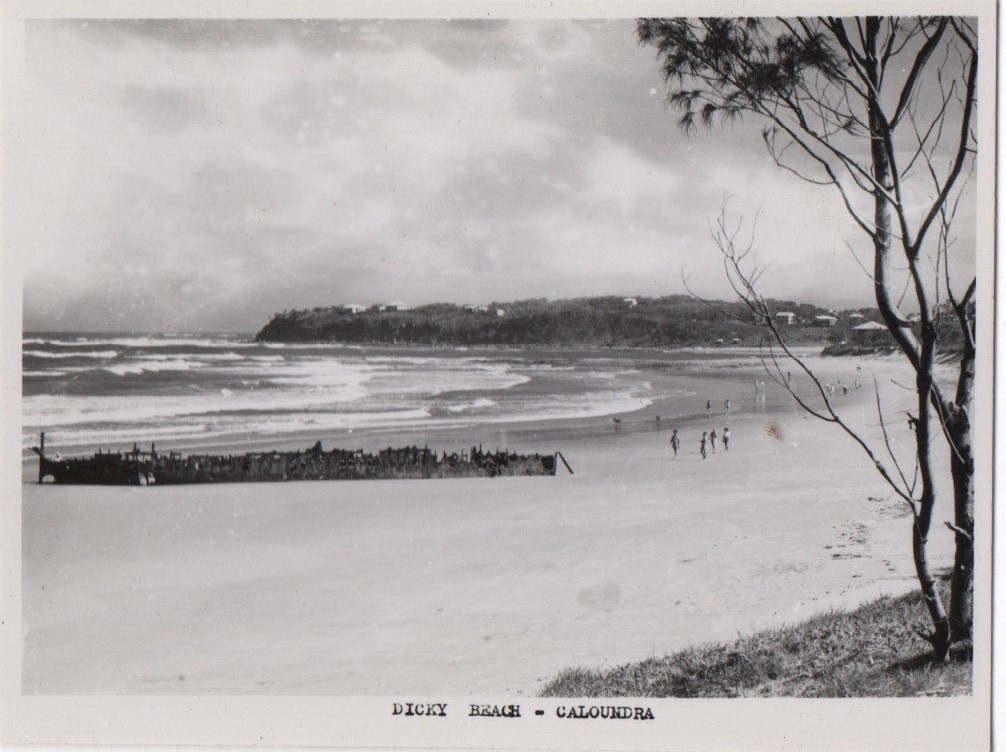
Believed to date to the 1940s, the images were captured by local Caloundra photographer AM Clark.
“The photos are very, very small, maybe 5 to 6 centimetres and they came in a little envelope which people would have bought when holidaying on the Coast as souvenirs to take home and show their relatives,” Beatrice Thomson, who now lives in Canberra, said.
“Postcards were very popular in the early 1900s.”

Ms Thomson shared the pictures on the popular Facebook page Coast Locals – Then and Now where long-time Sunshine Coast residents reminisce and post images of bygone eras.
Her collection includes striking old shots of Moffat Headland before there was any luxury housing on the rocky clifftop, and Tooway Creek with a vantage to the headland.
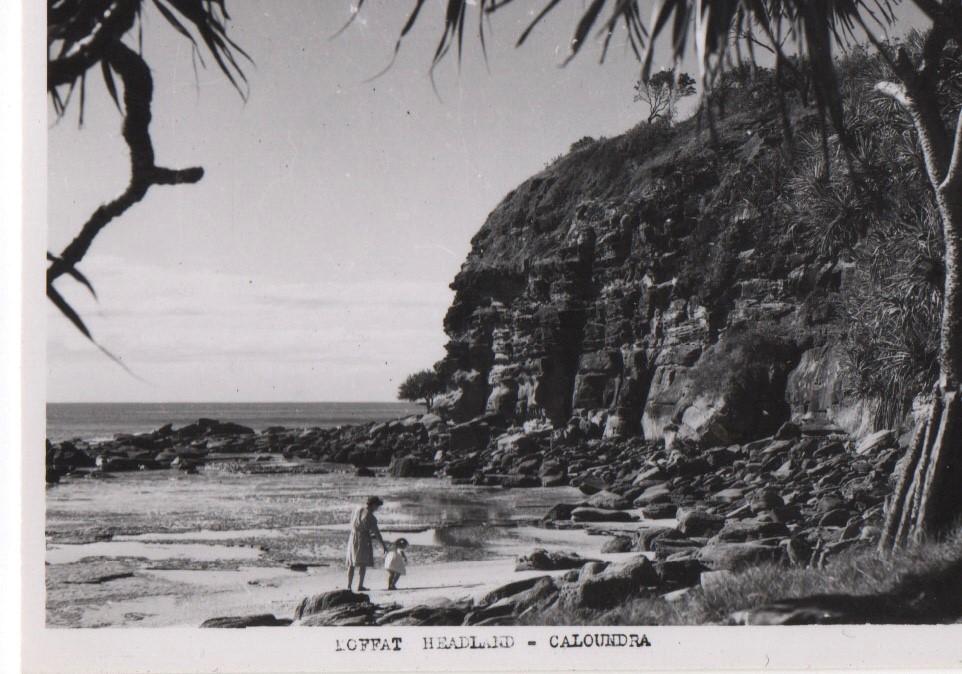
Moffat became a popular camping spot when the Tooway Caravan Park was established after 1938.
Moffat Headland was named after James C. Moffat, a chemist from Brisbane who established a cottage on the headland in 1882.
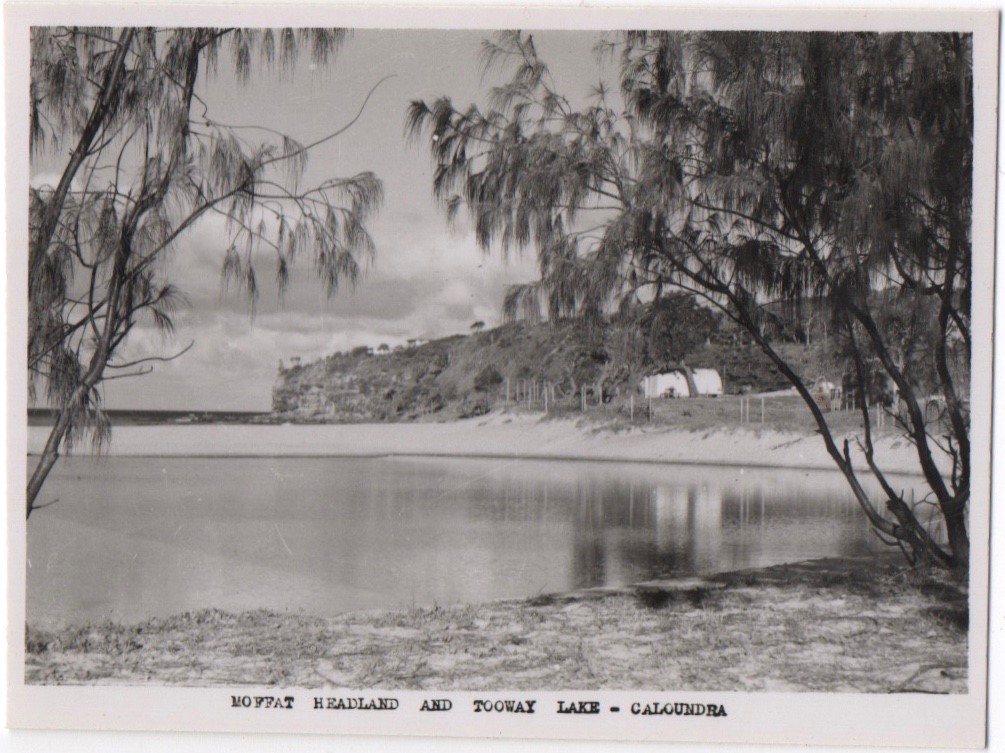
“I grew up on the Sunshine Coast as a teen and I remember there were trees and bushland at the beaches and you had to walk down tracks to get to the beach,” she said.
“When you were on the beach you would be looking back and all you saw was the bush; you couldn’t see much of the houses.”
In another photo (pictured above), a tall Norfolk pine is just about the only recognisable feature of Kings Beach which in those days had high sand dunes in stark contrast to today’s footpaths and manicured barbecue areas.
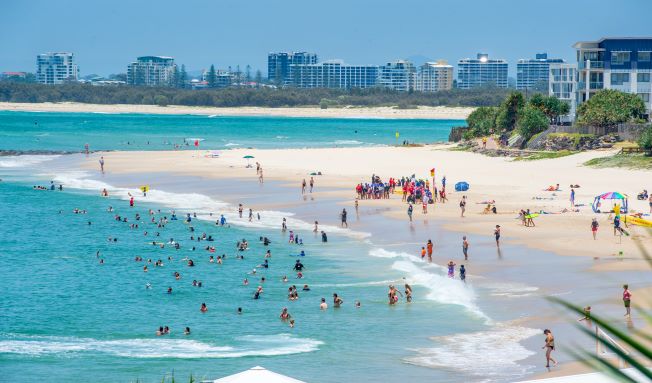
According to Sunshine Coast Council’s archives, the Council in 1936 levelled some dunes to create a car park at Kings Beach to try and compete with other beaches closer to Brisbane.
Local history buff Roger Todd writes that after the war there was a holiday exodus to the beach, and Caloundra, as the first ocean beach on the mainland north from Brisbane, was the most popular Sunshine Coast location.
In 1939, Caloundra’s wide main street, Bulcock Street, had a bitumen surface applied and in 1942 came electricity.
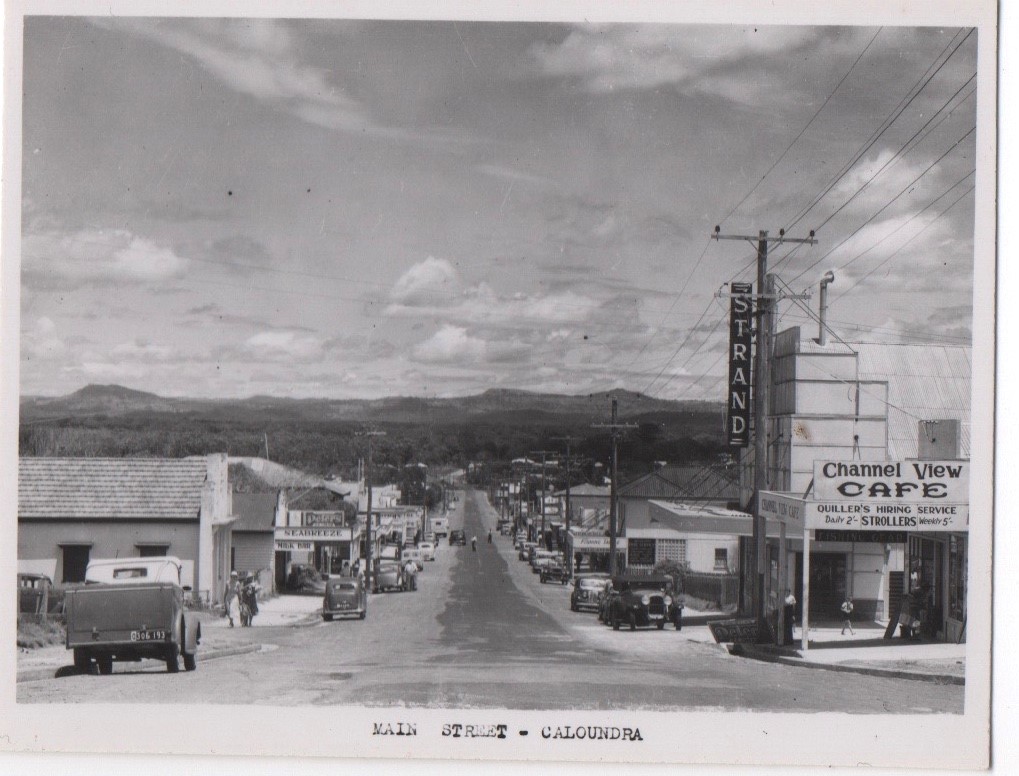
By the time Ms Thomson was growing up in the 70s and 80s, the Sunshine Coast was all about surf and sun with a community where you knew everyone.
“When I was on the Coast people would camp on the beaches and everybody from inland used to go and camp on the beach for six weeks at summer,” she said.
“It’s a way of life gone. It was a simpler and much more personal way of life.”





